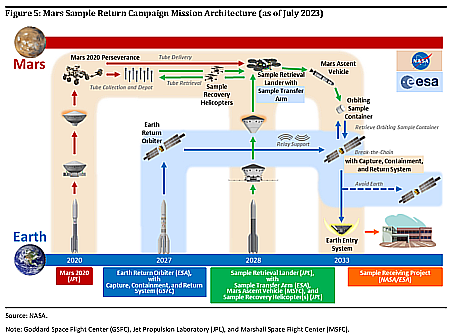JPL shuts down due to threat from California fires
In a tweet posted yesterday, the head of JPL announced that all operations have been shut down because of the growing threat from the wildfires that are devastating the Los Angeles region.
JPL is closed except for emergency personnel. No fire damage so far (some wind damage) but it is very close to the lab. Hundreds of JPLers have been evacuated from their homes & many have lost homes.
If these fires should reach the center and do significant damage, a number of on-going space missions will be severely impacted, since those missions, such as the two Mars rovers, are operated from this location.
And this possibility exists, in this new dark age. The Democratic Party governments of Los Angeles and California have done everything they can in the past two decades to block fire prevention, from not managing the brush in the mountains to cutting funding to their fire departments to refusing to supply sufficient water to their fire hydrant system. This last action, which also included destroying dams, eliminating reservoirs, and refusing to replace them, is the most despicable. It appears firefighters throughout Los Angeles have been helpless because the hydrants have been dry. Thus, the fires burn out of control.
If the nearby fire reaches JPL we shall face the possibility that several major on-going space missions could suddenly end.
In a tweet posted yesterday, the head of JPL announced that all operations have been shut down because of the growing threat from the wildfires that are devastating the Los Angeles region.
JPL is closed except for emergency personnel. No fire damage so far (some wind damage) but it is very close to the lab. Hundreds of JPLers have been evacuated from their homes & many have lost homes.
If these fires should reach the center and do significant damage, a number of on-going space missions will be severely impacted, since those missions, such as the two Mars rovers, are operated from this location.
And this possibility exists, in this new dark age. The Democratic Party governments of Los Angeles and California have done everything they can in the past two decades to block fire prevention, from not managing the brush in the mountains to cutting funding to their fire departments to refusing to supply sufficient water to their fire hydrant system. This last action, which also included destroying dams, eliminating reservoirs, and refusing to replace them, is the most despicable. It appears firefighters throughout Los Angeles have been helpless because the hydrants have been dry. Thus, the fires burn out of control.
If the nearby fire reaches JPL we shall face the possibility that several major on-going space missions could suddenly end.







